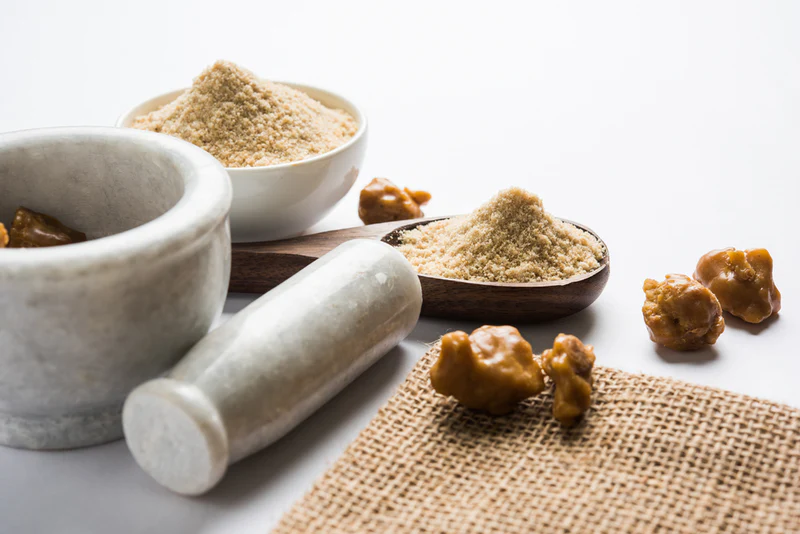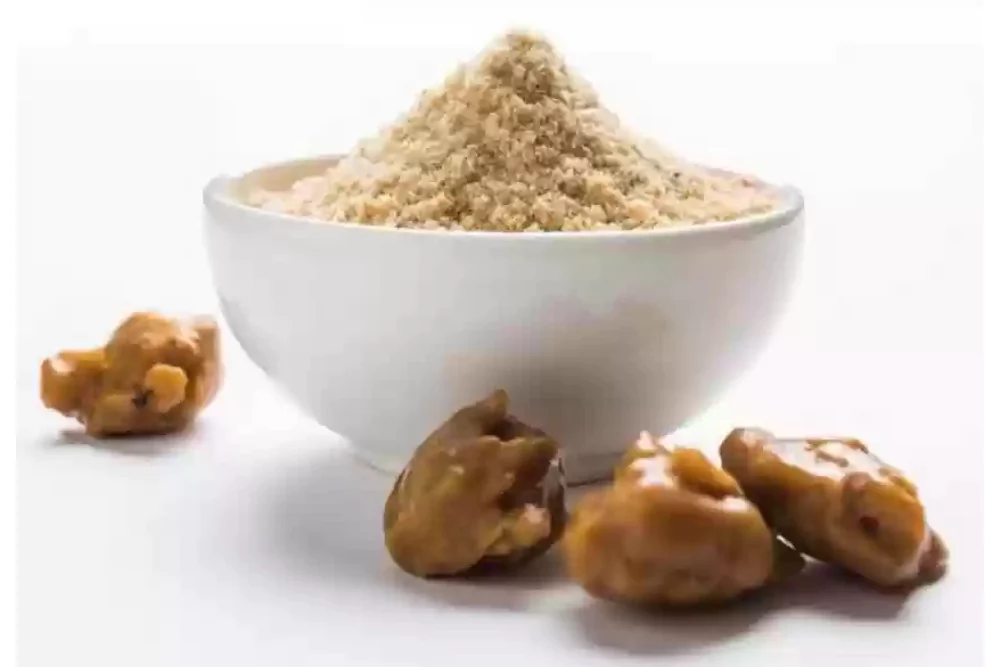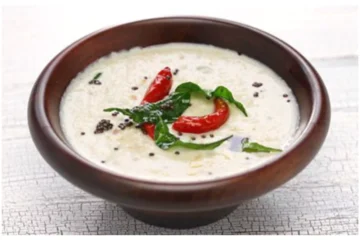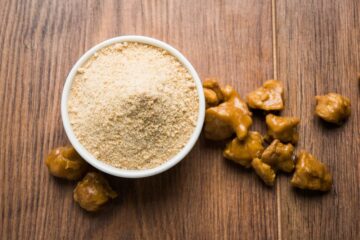What are the health benefits of using hing in South Indian dishes?
Short Answer: Hing, or asafoetida, offers numerous health benefits, including aiding digestion, reducing bloating, and acting as an anti-inflammatory agent.
Long Answer:
- Aids Digestion: Hing is known for its digestive properties, helping to alleviate indigestion, bloating, and gas. It stimulates the production of digestive enzymes, promoting a healthy gut. By supporting digestion, hing helps to ensure that nutrients are effectively absorbed, contributing to overall health and wellness.
- Anti-inflammatory: Hing contains compounds with anti-inflammatory properties that can help reduce inflammation in the body, potentially alleviating symptoms of arthritis and other inflammatory conditions. The active compounds in hing, such as ferulic acid and umbelliferone, have been studied for their ability to reduce markers of inflammation.
- Antimicrobial: Hing has antimicrobial properties, which can help combat harmful bacteria and viruses, supporting the immune system. Traditionally, hing has been used to treat infections and enhance immunity, making it a valuable addition to a healthy diet.
- Respiratory Health: Hing is believed to help relieve respiratory issues like asthma and bronchitis by acting as a natural expectorant, helping to clear mucus and improve breathing. The warm, pungent nature of hing helps to soothe the respiratory tract, providing relief from coughs and colds.
- Regulates Blood Sugar: Hing may help regulate blood sugar levels by improving insulin sensitivity, making it beneficial for individuals with diabetes. Research suggests that hing can enhance the activity of insulin and support glucose metabolism, helping to maintain stable blood sugar levels.
How does hing enhance the flavor of traditional South Indian recipes?
Short Answer: Hing enhances the flavor of traditional South Indian recipes by imparting a unique umami taste and aroma that complements the spices and ingredients used in these dishes.
Long Answer:
- Umami Flavor: Hing adds a savory umami flavor to dishes, enhancing the overall taste profile. This umami taste is particularly important in vegetarian and vegan dishes, where it helps to create depth and richness. The complex flavor of hing can transform simple ingredients into a gourmet experience.
- Aromatic Intensity: Hing’s strong aroma can transform a dish, adding complexity and making it more appetizing. When used in the right quantity, it can elevate the flavors of other spices and ingredients. The pungent scent of hing mellows upon cooking, leaving behind a pleasing, lingering aroma.
- Enhances Spices: Hing works synergistically with other spices commonly used in South Indian cooking, such as mustard seeds, curry leaves, and turmeric. It helps to balance and bring out the best in these spices, creating a harmonious and well-rounded flavor profile.
- Reduces Bitterness: Hing can help reduce the bitterness of certain ingredients, such as fenugreek seeds, making the overall dish more palatable. By balancing bitterness, hing ensures that the flavors of the dish are well-balanced and enjoyable.
What are the different ways to incorporate hing into everyday South Indian meals?
Short Answer: Hing can be incorporated into everyday South Indian meals by adding it to tadka (tempering), using it in spice blends, and mixing it into batters and doughs.
Long Answer:
- Tadka (Tempering): One of the most common ways to use hing is in tadka, where it is added to hot oil along with other spices like mustard seeds, cumin seeds, and curry leaves. This tempering is then poured over dals, sambar, and other dishes. The sizzling sound and aromatic release of hing in hot oil are integral to the flavor foundation of many South Indian dishes.
- Spice Blends: Hing can be included in various South Indian spice blends, such as sambar powder and rasam powder. These blends are used to season a variety of dishes. The inclusion of hing in spice blends ensures that its flavor is distributed evenly throughout the dish.
- Batters and Doughs: A pinch of hing can be added to batters for dosas, idlis, and vadas, as well as doughs for puris and chapatis, to enhance their flavor. Hing not only adds flavor but also aids in digestion, making these dishes lighter on the stomach.
- Curries and Stews: Hing can be added to curries, stews, and vegetable dishes to impart its unique flavor and aroma. It is typically added at the beginning of cooking to allow its flavors to meld with the other ingredients, creating a rich and cohesive taste.
- Soups and Rasam: Hing is often used in South Indian soups and rasam, a spicy, tangy broth. It helps to round out the flavors and adds depth to these dishes. The comforting warmth of hing-infused rasam is perfect for soothing the senses.
Are there any specific South Indian dishes where hing is a must-have ingredient?
Short Answer: Yes, hing is a must-have ingredient in several South Indian dishes, including sambar, rasam, and avial.
Long Answer:
- Sambar: Hing is essential in sambar, a lentil-based vegetable stew. It enhances the flavor of the lentils and vegetables, making the dish more savory and aromatic. The inclusion of hing in sambar creates a rich and satisfying flavor that is beloved by many.
- Rasam: Hing is a key ingredient in rasam, a tangy and spicy soup-like dish. It adds depth to the flavors and complements the spices and tamarind used in the dish. The robust aroma of hing-infused rasam is both invigorating and comforting.
- Avial: Avial, a mixed vegetable curry with coconut, also benefits from the addition of hing. It helps to balance the flavors and adds a unique touch to the dish. The subtle hint of hing in avial enhances the natural sweetness of the vegetables and coconut.
- Poriyal: Hing is often used in poriyal, a dry vegetable stir-fry. It enhances the flavors of the vegetables and spices used in the dish. The aromatic presence of hing in poriyal makes it a delightful side dish.
- Thoran: In thoran, a coconut-based vegetable dish, hing adds an extra layer of flavor and complements the grated coconut and spices. The interplay of hing and coconut in thoran creates a harmonious and flavorful dish.
How can I balance the strong aroma of hing in my cooking?
Short Answer: To balance the strong aroma of hing, use it sparingly, toast it in hot oil, and combine it with other spices and ingredients.
Long Answer:
- Use Sparingly: A little hing goes a long way. Start with a small pinch and adjust according to your taste preferences. Using too much can overpower a dish. Gradually increasing the amount of hing allows you to find the perfect balance for your palate.
- Toast in Hot Oil: Toasting hing in hot oil before adding other ingredients helps to mellow its strong aroma and release its flavors gradually. The process of toasting enhances the aroma and makes it more palatable.
- Combine with Other Spices: Combining hing with other spices, such as cumin, mustard seeds, and curry leaves, can help balance its aroma and create a harmonious flavor profile. The interplay of spices ensures that no single aroma dominates the dish.
- Add at the Beginning: Adding hing at the beginning of the cooking process allows its flavors to meld with the other ingredients, resulting in a more balanced taste.
- Store Properly: Store hing in an airtight container to preserve its freshness and prevent it from losing its potency.





